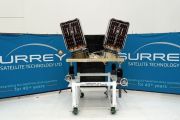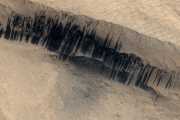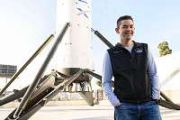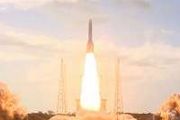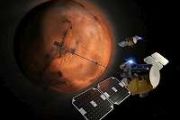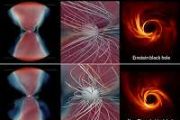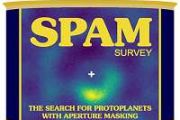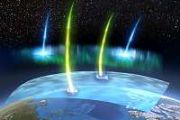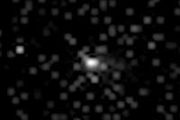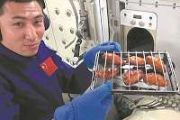
Copernical Team
NASA's Lunar Flashlight ready to search for the Moon's water ice

It's known that water ice exists below the lunar regolith (broken rock and dust), but scientists don't yet understand whether surface ice frost covers the floors inside these cold craters. To find out, NASA is sending Lunar Flashlight, a small satellite (or SmallSat) no larger than a briefcase. Swooping low over the lunar South Pole, it will use lasers to shed light on these dark craters—much like a prospector looking for hidden treasure by shining a flashlight into a cave.
Webb's portrait of the Pillars of Creation (MIRI)
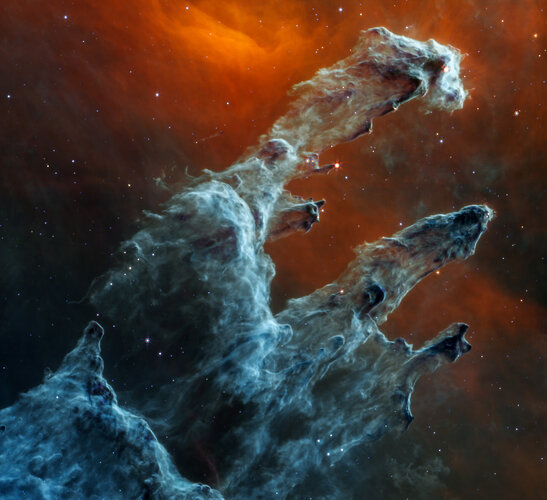 Image:
Image:
The NASA/ESA/CSA James Webb Space Telescope’s mid-infrared view of the Pillars of Creation strikes a chilling tone. Thousands of stars that exist in this region disappear from view — and seemingly endless layers of gas and dust become the centrepiece.
The detection of dust by Webb’s Mid-Infrared Instrument (MIRI) is extremely important — dust is a major ingredient for star formation. Many stars are actively forming in these dense blue-grey pillars. When knots of gas and dust with sufficient mass form in these regions, they begin to collapse under their own gravitational attraction, slowly heat up, and eventually
Webb’s instruments showcase the Pillars of Creation (slider)
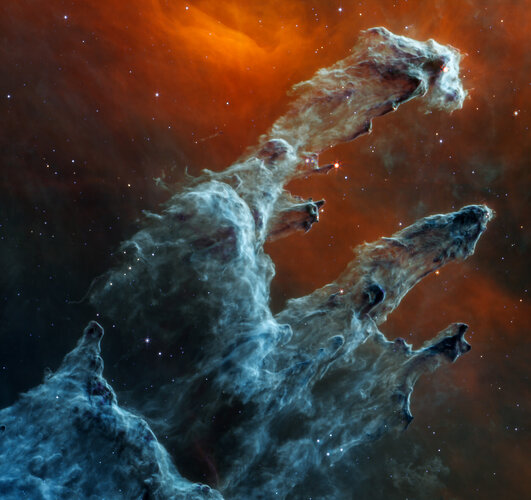 Image:
Image:
The NASA/ESA/CSA James Webb Space Telescope has revealed two new views of the Pillars of Creation, which was made famous by the NASA/ESA Hubble Space Telescope in 1995, and again in 2014.
On the left is Webb’s Mid-Infrared Instrument (MIRI) image. Interstellar dust cloaks the scene. And while mid-infrared light specialises in detailing where dust is, the stars aren’t bright enough at these wavelengths to appear. Instead, these looming, leaden-hued pillars of gas and dust gleam at their edges, hinting at the activity within. Learn more about this image here.
On the right is Webb’s
Presentations from SOLARIS Industry Day
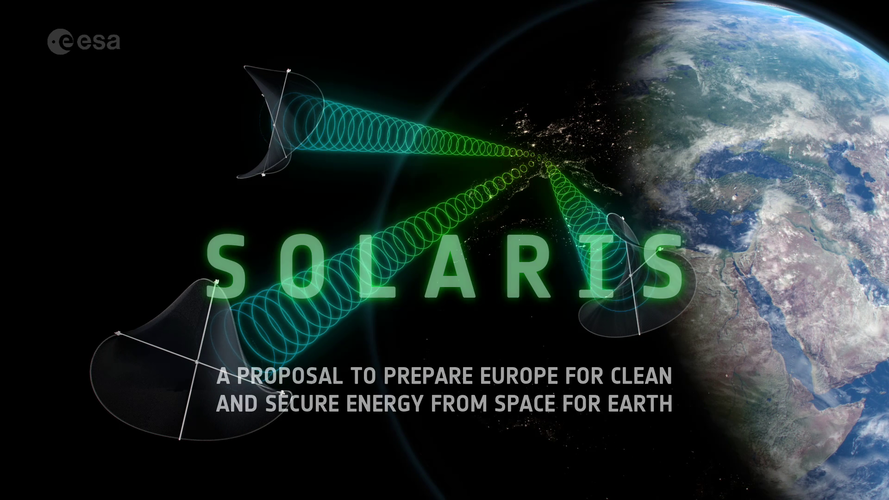
To support the preparation of the SOLARIS initiative on Space-Based Solar Power, to be proposed at ESA's Ministerial Council next month, the Agency organised the first SOLARIS Industry Day.
The event took place at the ESTEC technical centre in the Netherlands and online on 18 October 2022.
Week in images: 24-28 October 2022
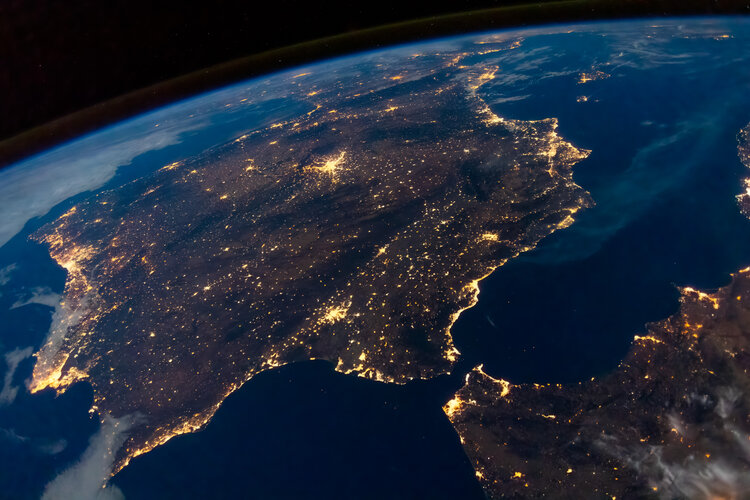
Week in images: 24-28 October 2022
Discover our week through the lens
Haunting portrait: Webb reveals dust and structure in Pillars of Creation

This is not an ethereal landscape of time-forgotten tombs. Nor are these soot-tinged fingers reaching out. These pillars, flush with gas and dust, ‘bury’ stars that are slowly forming over many millennia. The NASA/ESA/CSA James Webb Space Telescope has snapped this eerie, extremely dusty view of the Pillars of Creation in mid-infrared light – showing us a new view of a familiar landscape.
SOLARIS Industry Day - update

To support the preparation of the SOLARIS initiative on Space-Based Solar Power, to be proposed at ESA's Ministerial Council next month, the Agency organised the first SOLARIS Industry Day.
The event took place at the ESTEC technical centre in the Netherlands and online on 18 October 2022.
Sidus Space signs MOU with Mission Space for Space Weather Intelligence Data Partnership
 Sidus Space, Inc. (NASDAQ:SIDU), a Space-as-a-Service company focused on mission critical hardware manufacturing combined with commercial satellite design, manufacture, launch, and data collection, recently signed a memorandum of understanding with Mission Space for a partnership for space weather intelligence data collection.
With this partnership, Sidus Space will integrate sets of Missi
Sidus Space, Inc. (NASDAQ:SIDU), a Space-as-a-Service company focused on mission critical hardware manufacturing combined with commercial satellite design, manufacture, launch, and data collection, recently signed a memorandum of understanding with Mission Space for a partnership for space weather intelligence data collection.
With this partnership, Sidus Space will integrate sets of Missi Meteorite that smashed into Mars shook planet
 Scientists who study Mars on Thursday revealed the remarkable Christmas gift they received from the planet last year.
On December 24, 2021, a meteorite hit Mars' surface, triggering magnitude 4 tremors, which were detected by NASA's InSight spacecraft - which landed on the planet four years ago - some 2,200 miles (3,500 kilometers) away.
The true origin of this so-called marsquake wa
Scientists who study Mars on Thursday revealed the remarkable Christmas gift they received from the planet last year.
On December 24, 2021, a meteorite hit Mars' surface, triggering magnitude 4 tremors, which were detected by NASA's InSight spacecraft - which landed on the planet four years ago - some 2,200 miles (3,500 kilometers) away.
The true origin of this so-called marsquake wa NASA generated $71 billion in economic impact in 2021
 NASA's latest economic impact report released Thursday, boasting $71.2 billion in output during the fiscal year 2021.
The report from NASA outlines how its activities, including research and technology, affect the economy. Those activities supported more than 339,000 jobs across the United States while generating about $7.7 billion in tax dollars.
NASA's moon to Mars mission was
NASA's latest economic impact report released Thursday, boasting $71.2 billion in output during the fiscal year 2021.
The report from NASA outlines how its activities, including research and technology, affect the economy. Those activities supported more than 339,000 jobs across the United States while generating about $7.7 billion in tax dollars.
NASA's moon to Mars mission was 







